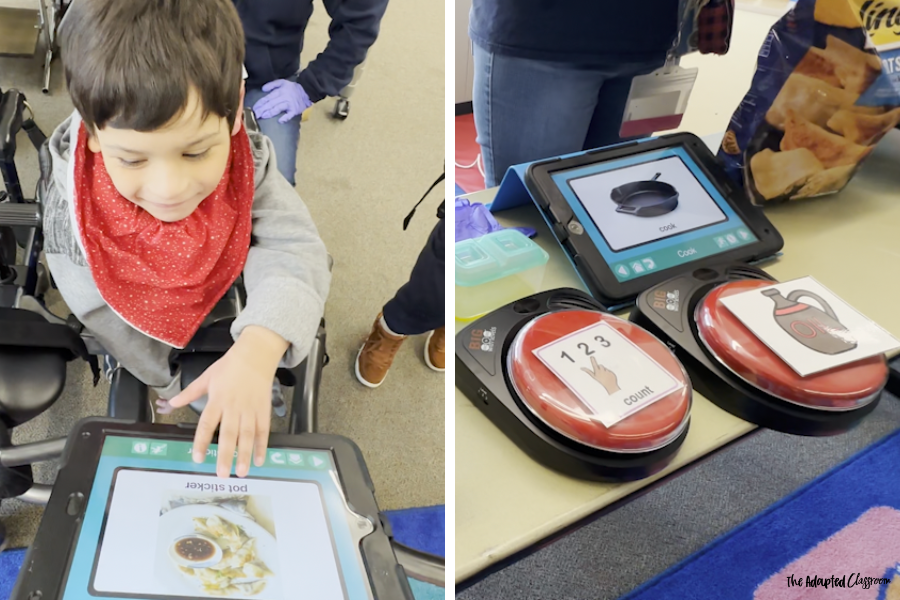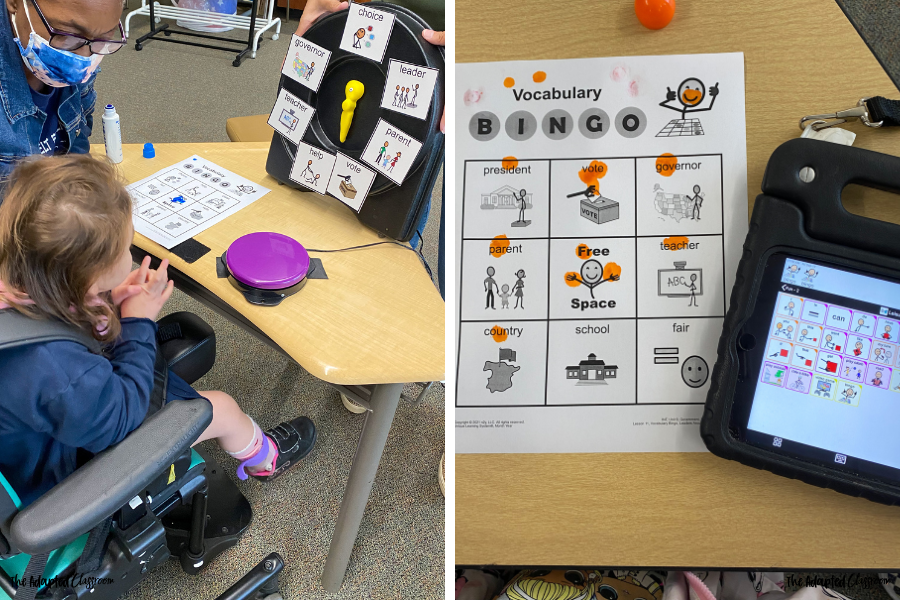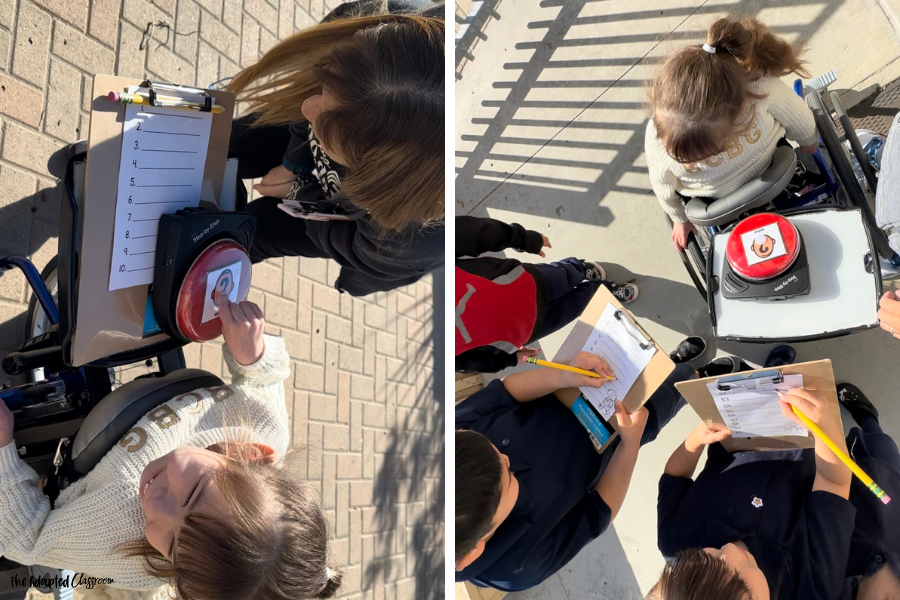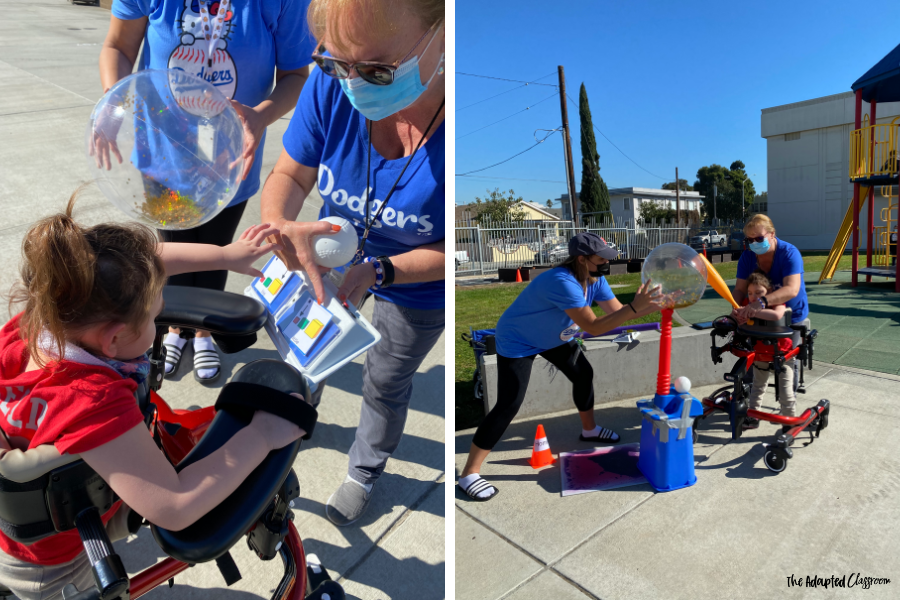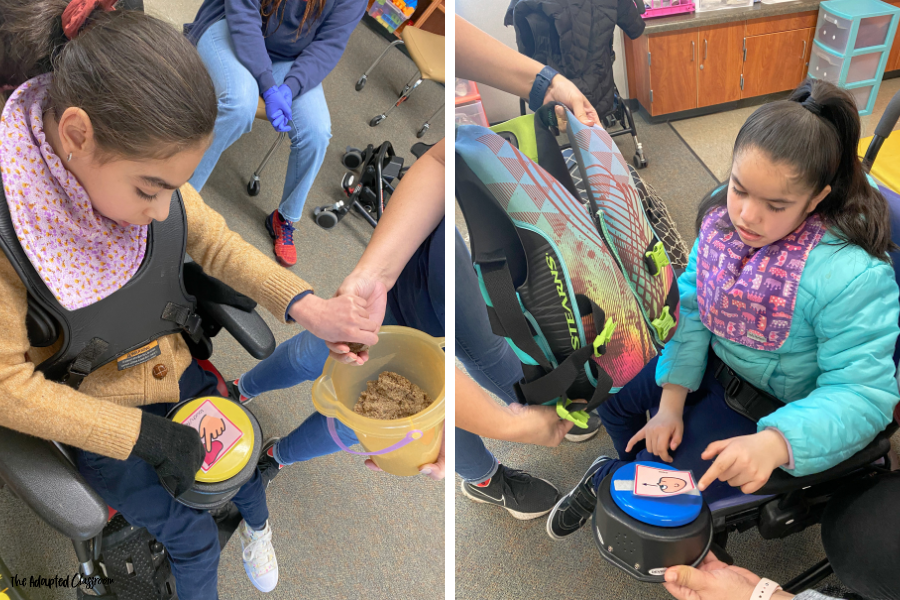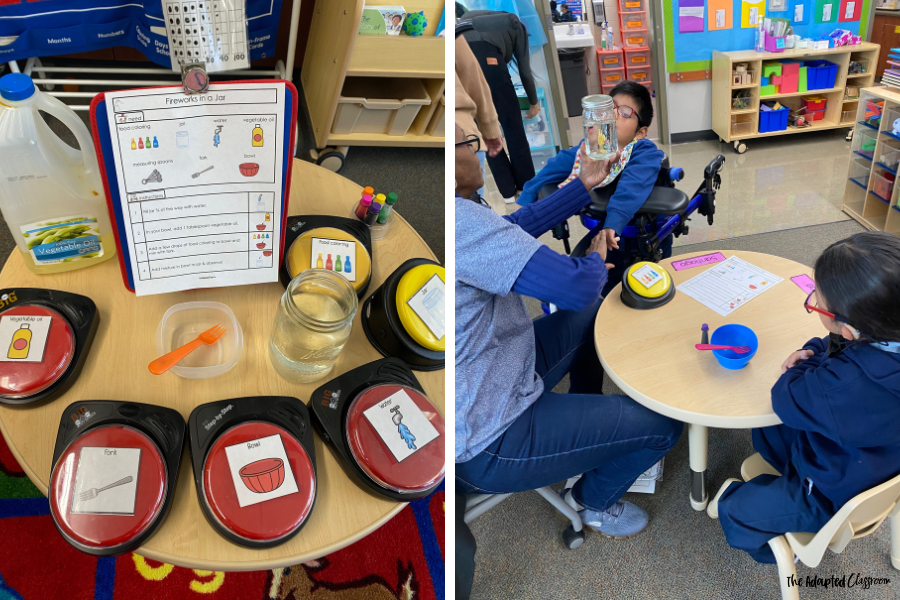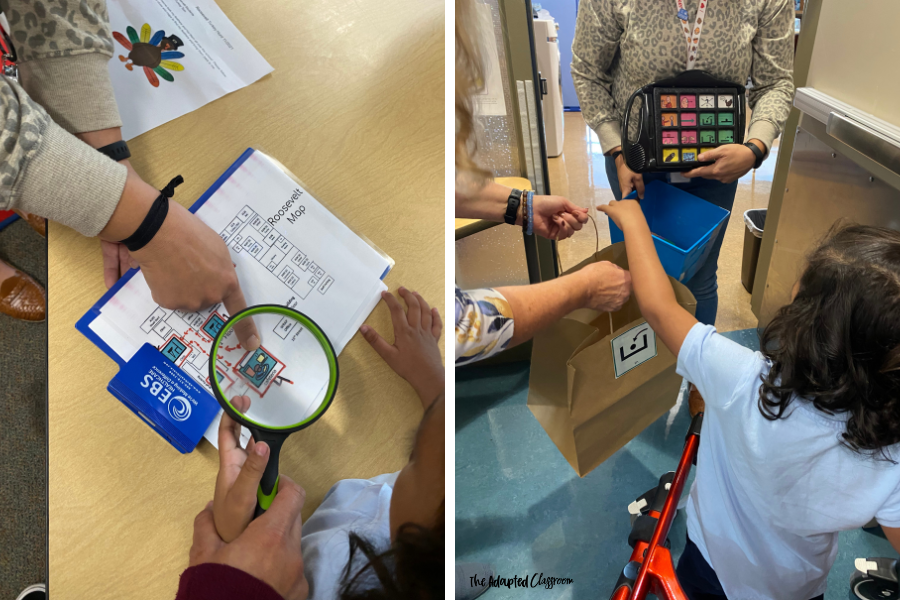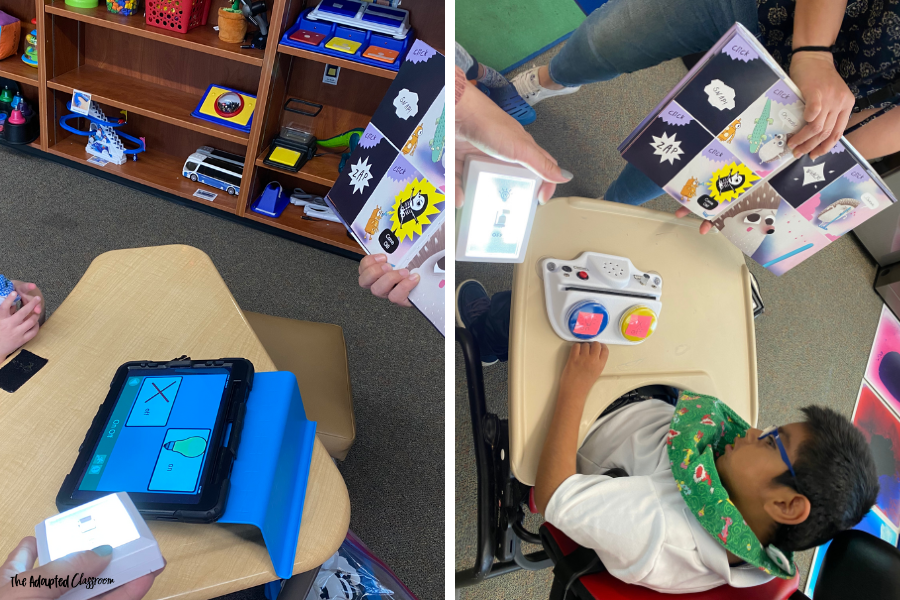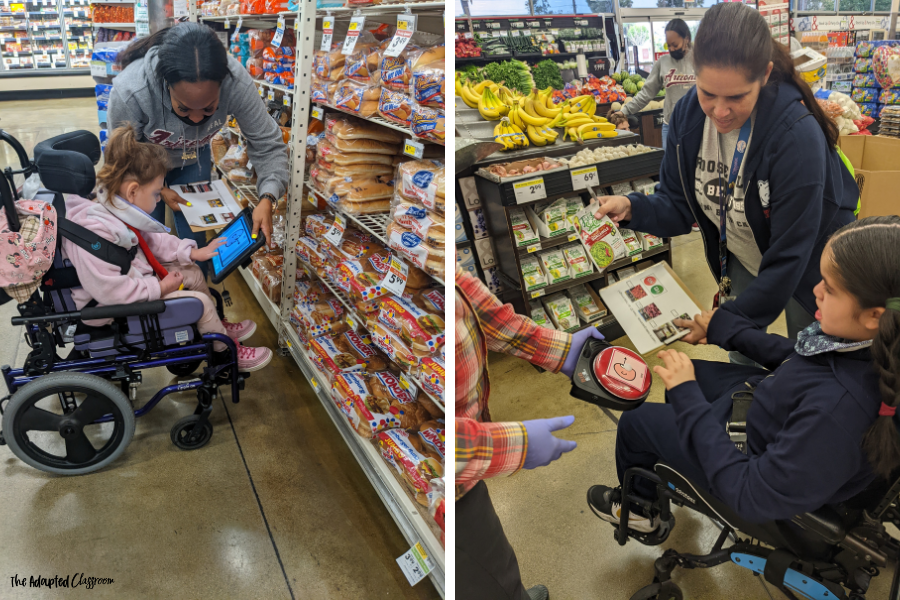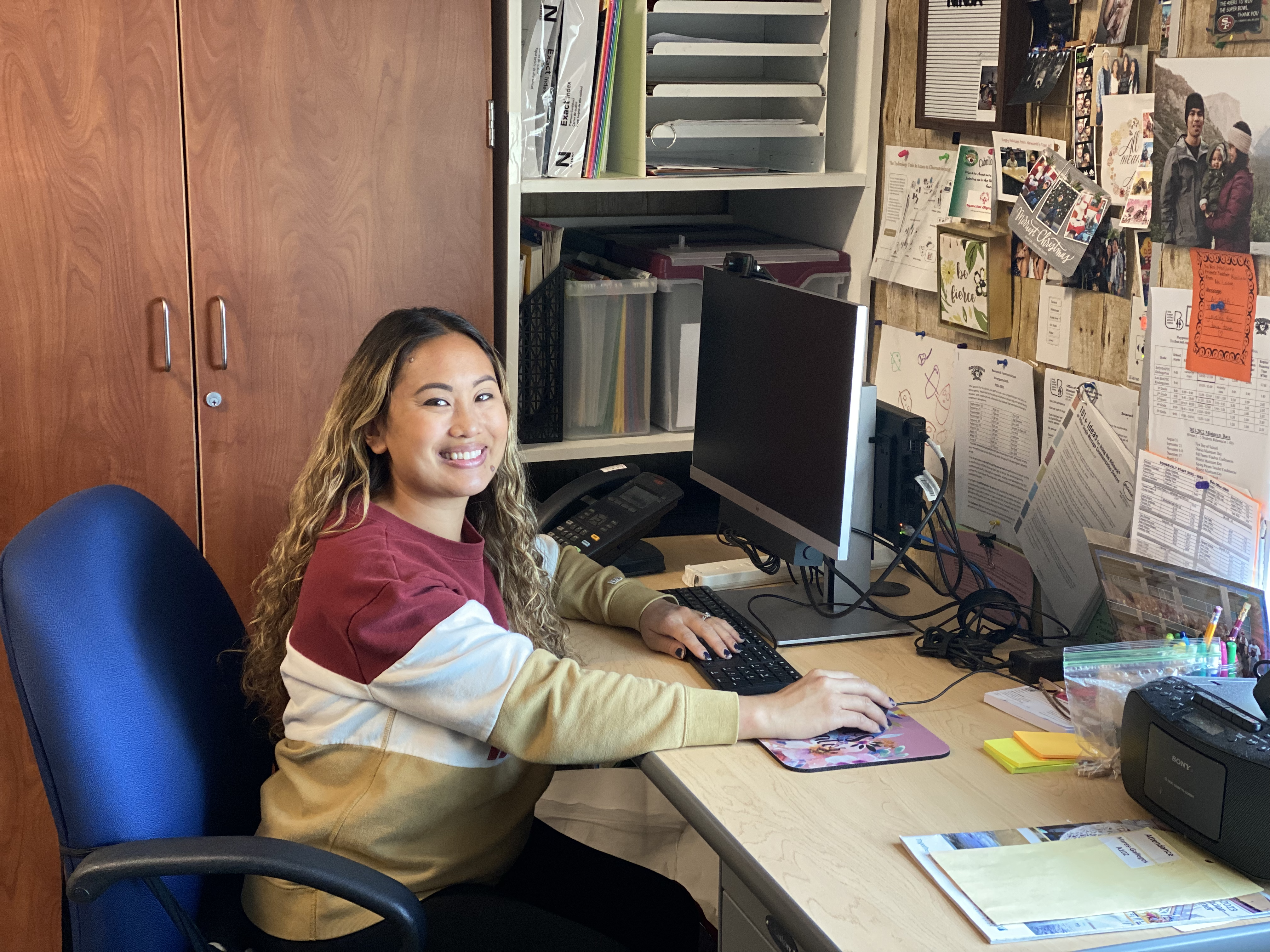AAC (Augmentative and Alternative Communication) activities can be fun and engaging for people of all ages and abilities. Here are 10 ideas for fun AAC activities:
Cooking
Students can use AAC to support cooking instruction. Visual supports support step-by-step instructions. AAC symbols or pictures help students follow a recipe or cooking process.
BINGO
Bingo can be fun and interactive to promote communication skills and social interaction. When playing, students can use symbols or pictures to greet others, comment on the game, or express excitement or disappointment. Students can use symbols or pictures to indicate whose turn to call out numbers or mark their cards.
SURVEY
Have students survey or interview other students around the school! Create a communication board with symbols or pictures related to the survey questions. The communication board can include symbols for yes/no, multiple-choice options, or open-ended questions. AAC can help students express their opinions, preferences, and needs and improve their participation and engagement.
BASEBALL
Baseball can be a fun and engaging way to promote communication skills and social interaction. Create a communication board with symbols or pictures related to the game of baseball. The board can include symbols for different plays, such as “home run,” “strike,” or “ball.” Use AAC to support choice-making during baseball. For example, students can use symbols or pictures to choose the type of pitch they want to throw or the type of bat they want to use.
BRING THE BEACH TO THE CLASSROOM
Bringing the beach experience to the classroom can be enjoyable, safe, and accessible. Create a communication board with symbols or pictures related to the beach. The board can include symbols for different activities, such as “swimming,” “building a sandcastle,” or “playing volleyball.” Use AAC to talk about the other senses at the beach. TOUCH sand, LOOK at the lifesaver, HEAR ocean sounds, TASTE ocean water, SMELL sunscreen lotion.
SCIENCE
Create a communication board with symbols or pictures related to science. The board can include symbols for different scientific concepts such as “atoms,” “molecules,” or “energy.” Science activities can be accessible and engaging with AAC. Use AAC to support choice-making during science activities. For example, students can use symbols or pictures to choose the experiment they want to participate in or the type of equipment they want to use.
SCAVENGER HUNT
Scavenger hunts can help students practice their communication skills in a fun and engaging way. Create a map for students to follow and have students search for hidden items around the school. Create a communication board representing items on the scavenger hunt list. You can pre-record messages on an AAC device that provides clues or instructions for the scavenger hunt.
READ ALOUD
Students can use an AAC device to communicate during the read-aloud, such as asking questions, commenting, or expressing emotions. You can create visual supports such as picture symbols or a communication board corresponding to the story. The communication board can help the individual to follow along and understand the story better.
GROCERY STORE
You can take a field trip to a local grocery store or turn your classroom into a grocery store for a similar experience! Create a visual shopping list using picture symbols or photographs to help students identify the items they need to purchase. Use the grocery store to practice money skills, such as counting money, making change, or paying for items independently. These skills can be supported using AAC devices.
GARDENING
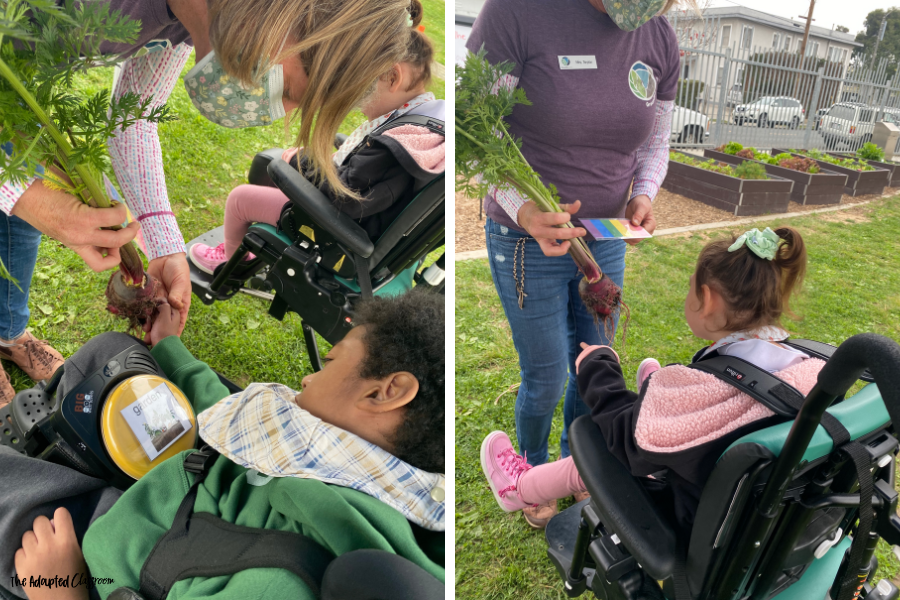 Gardening can be an excellent opportunity to practice descriptive language, such as naming the different parts of a plant, describing their texture or color, or comparing other plants. These skills can be supported using AAC devices.
Gardening can be an excellent opportunity to practice descriptive language, such as naming the different parts of a plant, describing their texture or color, or comparing other plants. These skills can be supported using AAC devices.
Overall, using AAC can support students with communication needs to participate in fun activities, learn new vocabulary, and interact with others. Tailoring the support to the individual’s specific needs and abilities can be helpful.

